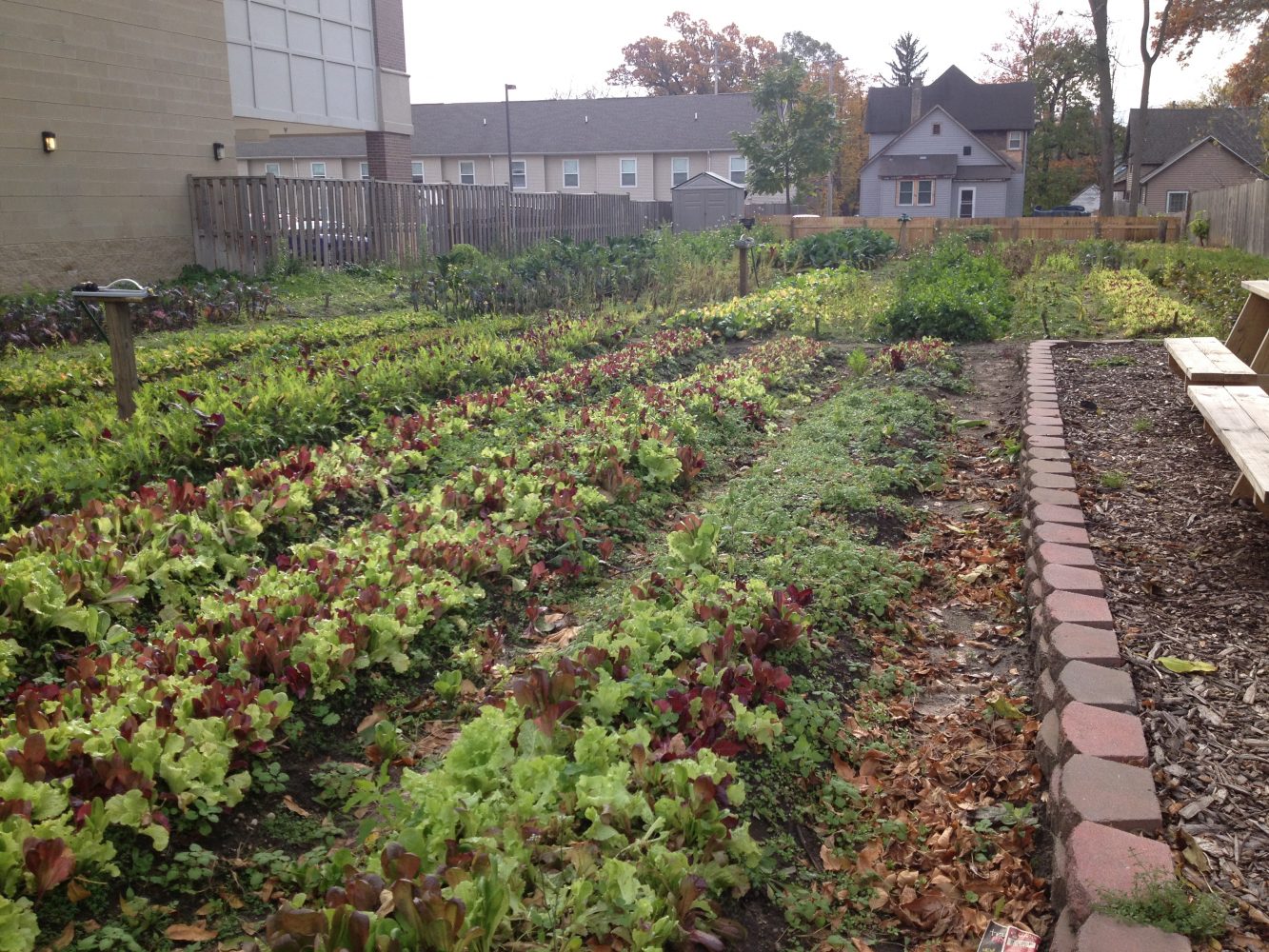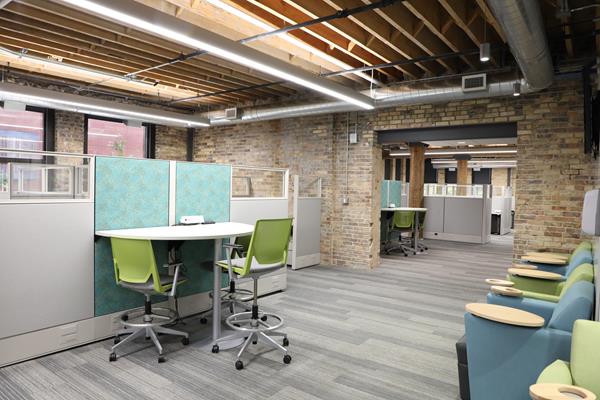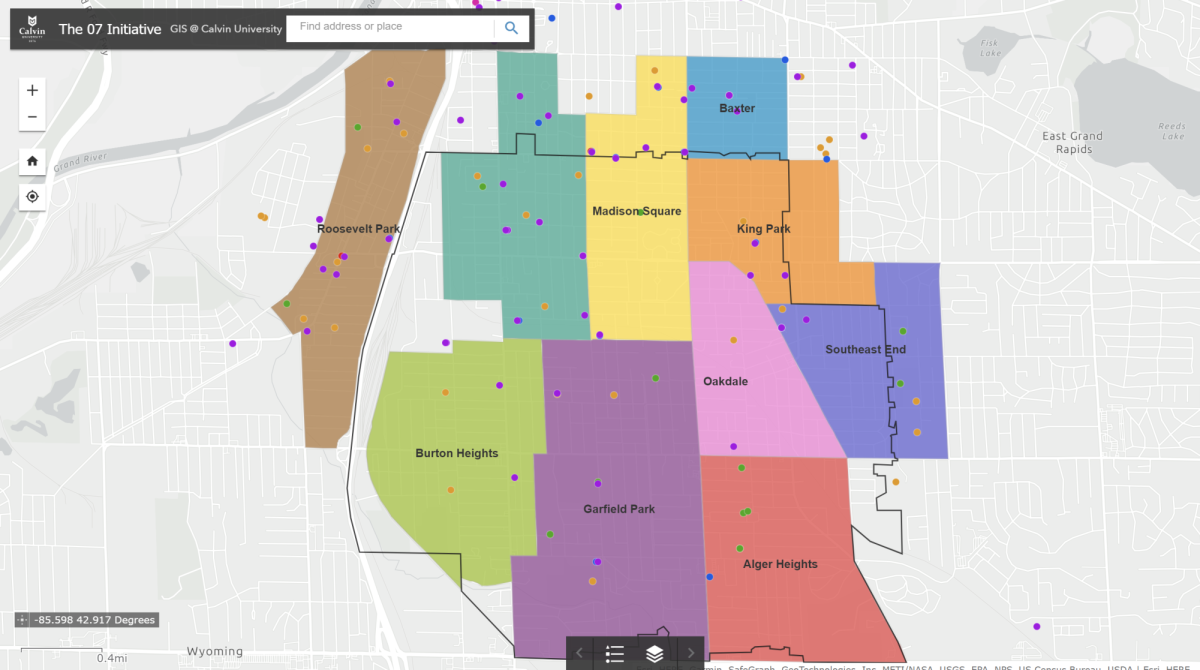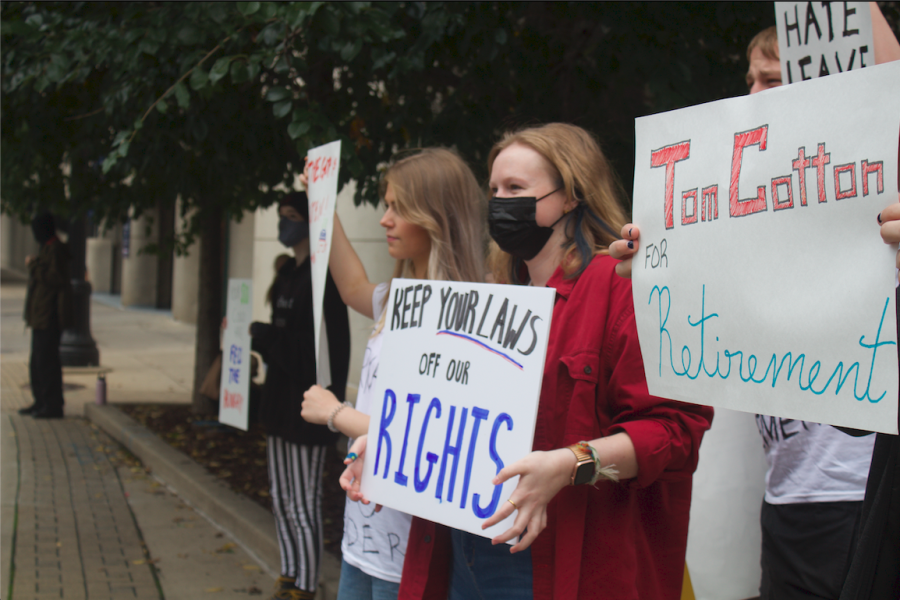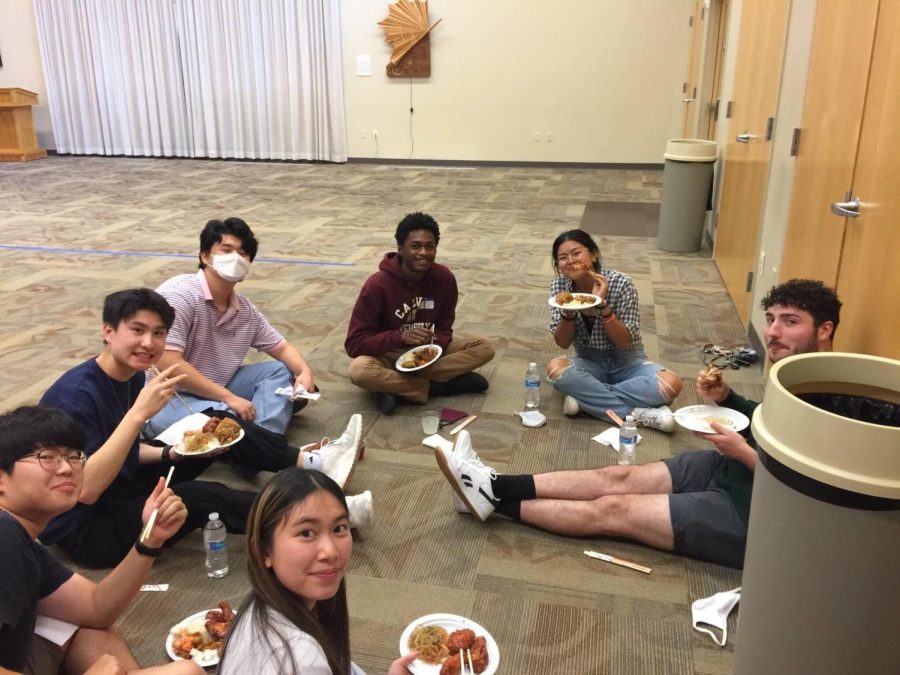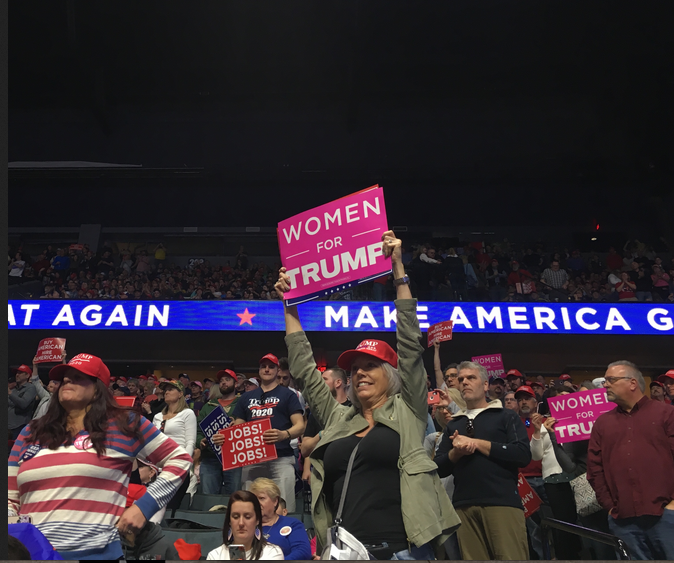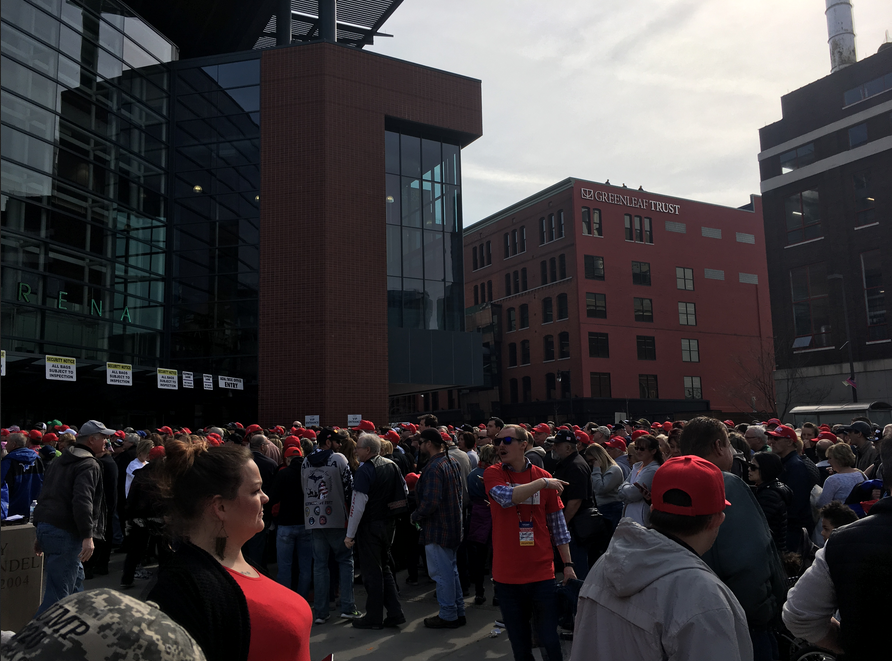The brisk autumn breeze sends dry, crackling leaves through the rows of produce. The leaves make their way through the radishes, lettuce and kale. A shiny gray shed sits at the far left corner, looking over the small field; four wooden picnic tables sit near the entrance, a place where the farmers come together to eat the product of their hard work.
This very green, small farm is in the middle of the city of Grand Rapids. It does not reside out in the country or out in farmland, but instead sits in between a house and a store that sells wigs. It faces the busy brick road of Wealthy Street in the heart of Grand Rapids. It is called Uptown Farm.
On Monday, a man sat on his porch, smoking a cigarette and scrolling on his iPhone. I asked if he had anything to do with the farm adjacent to his house. He shook his head.
“I wish,” he said.
A group of local families meet to tend to the farm and sell to local Grand Rapids restaurants like Trillium Haven, he explained. On Monday nights, when the weather is nice, they meet to eat dinner on the picnic tables, although the weather wasn’t nice this week. In fact, it was quite cold and the plot was empty of people and yet, still filled with life.
This in-city farm is just one of the few vacant lots acquired by City Farmers, an urban growing collective in Grand Rapids. Their website describes themselves as “urban growers, entrepreneurs and food lovers.” The group provides a place for local families to make a profit by selling the food they grow to local restaurants.
Andy Dragt, one of the collective’s founders, started Uptown farm about one and a half years ago in order to bring some of the local farmers together. Small-scale farming isn’t always easy. He explained finding time to manage supply and demand and to deal with bills is difficult.
Dragt explained why a collective would be beneficial to the farmers.
“A collective of growers in the city all managing their own land and growing techniques, could act bigger and maybe support a bit of infrastructure that would let the growers concentrate on growing and let someone good at managing a business coordinate the systems,” Dragt said.
Uptown is not the only small farm in Grand Rapids.
“There are quite a few small urban growers around,” Dragt said, “but we all act quite independent of each other and I think we’d benefit from coordination to meet the growing demand for ultra local fresh produce.”
Uptown’s produce was sold to many different places in Grand Rapids this season. The Downtown Market was the primary outlet along with a few restaurants, such as Bartertown, Cult Pizza, Grove and even the downtown YMCA.
Their website contains the mission statement of City Farmers.
“Every city has its share of vacant land. What if cities could build teams of urban farmers to cultivate these parcels — to produce quality, organic produce sustainably, while making money at the same time? City Farmers’ mission is just that.”
City Farmers also supplies to Doorganics, a group that delivers local produce right to the doors of customers. These groups are all part of a movement to bridge the gap between the marketplace and the urban farmer.
Grand Rapids isn’t the only city making this happen — other urban farms are popping up in Los Angeles, Chicago, Baltimore and many other cities across the United States.



